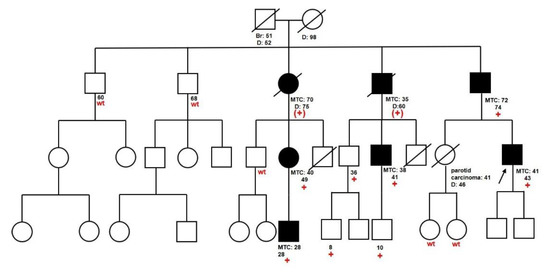|
Anapafseos 5 Agios Nikolaos 72100,Crete,Greece,00302841026182,00306932607174,alsfakia@gmail.com
Blog Archive
- ► 2022 (3010)
- ► 2021 (9899)
-
▼
2020
(4138)
-
▼
November
(1979)
-
▼
Nov 04
(66)
- Antifungal Activity of Thai Cajuput Oil and Its Ef...
- Electroacupuncture Improves Cognitive Function in ...
- Central Venous Catheter Insertion: A Scoring Syste...
- Antimicrobial Activity of Pomegranate Peel and Its...
- Five Years Pathological Evaluation of Corneal Regr...
- Unilateral Toxic Anterior Segment Syndrome Resulti...
- Upregulated Long Noncoding RNA UCA1 Enhances Warbu...
- Germline RET Analysis in a Series of Patients with...
- Myeloma Cells Deplete Bone Marrow Glutamine and In...
- Buccolingual Inclination of Canine and First and S...
- Identification of Prognosis-Related Genes in Bladd...
- Microcatheter-Assisted Circumferential Trabeculoto...
- miR-139-5p Inhibits Lung Adenocarcinoma Cell Proli...
- Explicating the Pivotal Pathogenic, Diagnostic, an...
- Analysis of Chest CT Results of Coronavirus Disease
- Effects of Sublingual Duster Mite Drops on Lung Fu...
- Facial Emotion Recognition and Polymorphisms of Do...
- After Treatment Decrease of Bone Marrow Tregs and ...
- Chicoric Acid Ameliorates Nonalcoholic Fatty Liver...
- Circulating Interleukin-6 (but Not Other Immune Me...
- A Report on a Family with TMTC3-Related Syndrome a...
- Winging of Scapula due to a Sinister Etiology
- CK20 and CK5/6 Immunohistochemical Staining of Uro...
- Hydroxysafflor Yellow A Attenuates Hydrogen Peroxi...
- Antibiotic Resistance Results of Helicobacter pylori
- Severe Pharyngodynia Followed by Migratory Polyart...
- Prevotella Induces the Production of Th17 Cells in...
- Papain immobilization on heterofunctional membrane...
- Fabrication of zein/alginate delivery system for n...
- Preparation, characterization and wound healing ef...
- Efficacy of ultrasound guidance for lumbar punctur...
- Glycemic variability: prognostic impact on acute i...
- Cancer associated macrophage-like cells and progno...
- Pharmacokinetics and Safety of Single and Multiple...
- Expanding the phenotype of MOG antibody-associated...
- Prevalence, predictors and prognosis of incidental...
- Associations of APOE e2 genotype with cerebrovascu...
- The future of neuroprotection in stroke
- Intraventricular neuroepithelial tumors: surgical ...
- High proportion of anergic B cells in the bone mar...
- Too much serotonin causes signs and symptoms that ...
- Serotonin Syndrome Associated With Vilazodone Over...
- Self-reported health without clinically measurable...
- ZMYND8 expression in breast cancer cells blocks T-...
- The microbiome and cancer: creating friendly neigh...
- Single-cell transcriptomic heterogeneity in invasi...
- Radiomic detection of EGFR mutations in NSCLC
- Ear Cartilage Reconstruction Combining Induced Plu...
- Facial Nerve Repair by Muscle-Vein Conduit in Rats...
- Glycosyltransferase ST6Gal-I promotes the epitheli...
- Human genetic variants disrupt RGS14 nuclear shutt...
- From pathogen to a commensal: modification of the ...
- De-Ritis Ratio Is Associated with Mortality after ...
- Cervical Cancer Screening Guidelines in the Postva...
- Skin Diseases among the Old Age Residents in a Nur...
- Effects of Yinzhihuang Granules on Serum Liver Enz...
- Palbociclib Plus Exemestane with GnRH Agonist vers...
- Effectiveness of Perindopril/Indapamide Single-Pil...
- Cinacalcet as a First-Line Treatment in Neonatal S...
- Assessment of D-Shaped Annulus of Mitral Valve in ...
- Anatomy of Mitral Valve Complex as Revealed by Non...
- The Mesenchymal Cap of the Atrial Septum and Atria...
- Muscularization of the Mesenchymal Outlet Septum d...
- Survey on Physicians’ Knowledge and Training Needs...
- Therapy Algorithms for the Diagnosis and Treatment...
- Multistage Latissimus Dorsi Flap with Implant for ...
-
▼
Nov 04
(66)
-
▼
November
(1979)
- ► 2019 (2429)
Αλέξανδρος Γ. Σφακιανάκης
Wednesday, November 4, 2020
Germline RET Analysis in a Series of Patients with Medullary Thyroid Carcinoma: The Challenge of the Variants of Uncertain Significance
Subscribe to:
Post Comments (Atom)



No comments:
Post a Comment